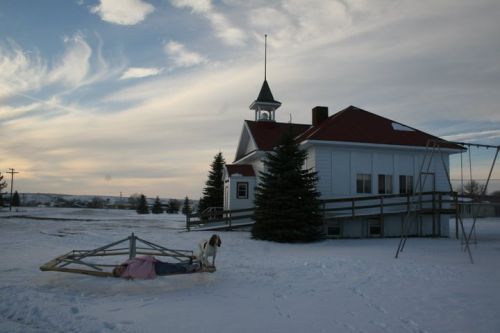Last Word | January 15th, 2020

by Karen Anderson
kartcone@gmail.com
Congratulations to the Fargo School District for opening up a discussion regarding today’s students as covered in the January 7, Barry Amundson article “Social, emotional learning a forefront of Fargo's State of the Schools.” I am a twenty year educator of students ranging in age PreK-16; I have seen a change in how students learn and an increase in their non-academic needs. Contemporaneously within the last decade schools have addedto their already full plate of academic and societal issues to deal with an uptick in anxiety, depression, and truancy.
I have a few suggestions outside of evidenced based attempts to solve these problems. My suggestions are based on rethinking the design of the physical environments and traditional schedules over the course of the thirteen years students are in our charge.
As a model I will describe the school I currently teach in called Youth Education Services. The YES program is located on the welcoming campus of MSUM in Moorhead, MN. Our students interact with a variety of MSUM departments of study. We are staffed by one administrative support person, six teachers and a Special Education professional. YES is a Minnesota State-Approved Alternative Program designed for high school students living in Minnesota that for whatever reason regular high school attendance is not working.
Our numbers are low enough for each staff member to connect with students in a less distracting casual atmosphere. Our curriculum is designed to enhance credit acquisition as well as support and respond to the demands of a student’s out of school life. The ratio of staff to student means that our students have eight people every day that are in tune to their individual issues. You are probably thinking, “How do they handle discipline issues"? I will repeat, the ratio of staff to student means that our students have eight people every day that are in tune to their individual issues, which translates into relationships that allow for trust.
Well you are saying now that that works great for a small group of students right? The takeaway is that there are some facets of this program that are transferable to larger school systems. Here is my wish list. 1. Allow teachers flexibility in how the school day is designed. Stop treating teachers like on the clock factory workers, which segues into the next number. 2. Team teaching, yes I said it, two teachers for a room of 30 students. There is NO WAY one teacher can deal with all their students’ academic and social/emotional needs. 3. Build mini schools rather than one large one.
Physical Education could now include their mental state as well. In that vein redesign schools in new ways to create grade/course pods surrounding an age adaptable activity great room that allows for a variety of uses, thus creating a team teaching scenario. Rethink the designing of every school with a huge gymnasium. Keep the team sports for students that want it at one of the mini schools. Provide tournament gymnasiums through city park boards. The elephant in the room is the huge amount of resources and time that revolves around team sports. Ask any teacher that has applied for a position if they have been asked, “What can you coach”? Sports are not bad but imagine what a different model of school could accomplish for students with other interests when teachers can take their minors or hobbies out for a spin. 4. Change how the professional development days for teachers are structured. Allow and fund a teacher to use that time to create activities to enable a student to show a teacher how they can use the knowledge they’ve learned. These activities take time to develop. 5. Start the day in High and Middle school with the same team of teachers you end the day with. Yep, double dip into that relationship. 6. Block schedule and beyond. Utilizing technology for “flipping” instruction or planning cross-curriculum lessons linked to an outside of school event or activity can become a tradition each grade level can look forward to. For example every year YES takes a group of students to Yellowstone National Park for a five day science immersion. Each YES teacher creates a cross curricular unit based around some facet of that experience. I have always marveled at how well behaved my most challenging student is when we exit the school and create meaning for them in real world experiences with real world applications.
Locking a child into a set curriculum of knowledge in exchange for them to produce credits to exit the system thirteen years later can be tweaked. Allow teachers to improvise away from set curriculum edicts; they and their students will shine. The key is relationships, relationships, relationships.
December 18th 2025
November 18th 2025
September 23rd 2025
June 19th 2025
June 19th 2025

_(1)_(1)_(1)__293px-wide.jpg)
_(1)__293px-wide.jpg)
_(1)__293px-wide.jpg)

_(1)__293px-wide.png)